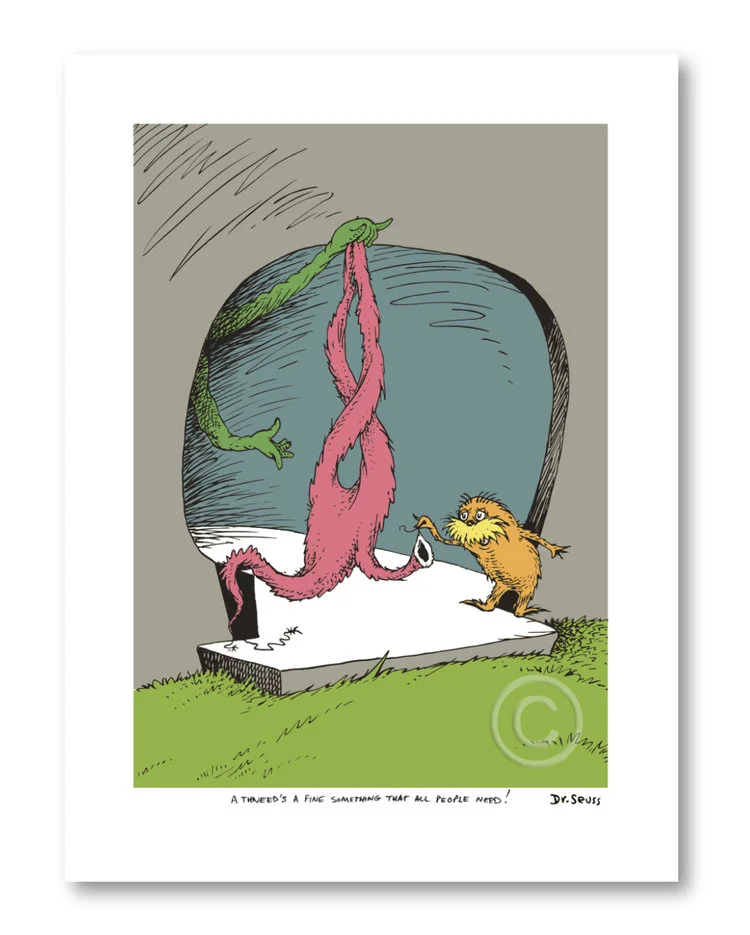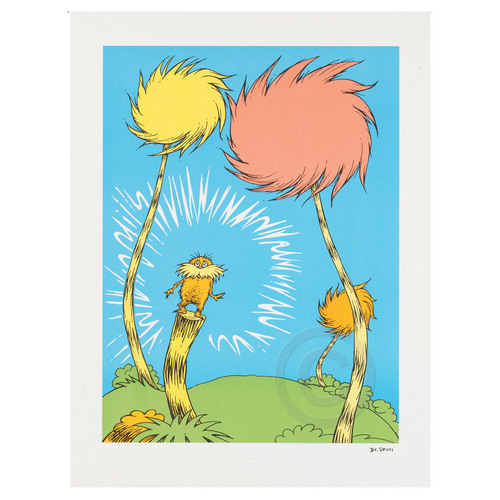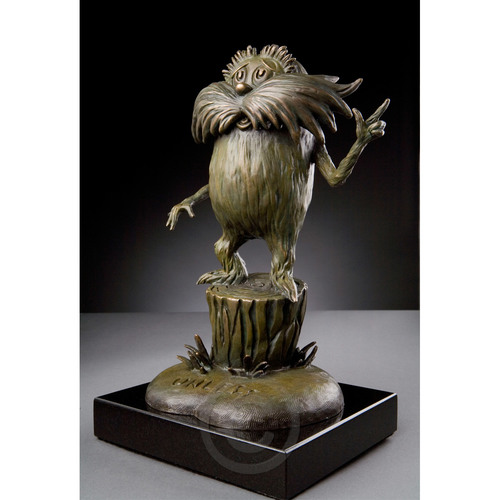“What Thneed do we really need?”
Over forty years ago, Dr. Seuss presented this metaphorical question in a book he had written about a furry little creature who came to speak on behalf of the trees. Seuss saw a changing world where modern progress and rapid growth presented a formidable risk to the future of our planet. And, in typical fashion, he packaged this explosive concern inside a lovable and surreal character — The Lorax. His chubby body, quick wit, and outright concern for the Oncler’s stubborn ambition to make a Thneed that everyone needs, marked him forever as one of the first standard bearers for the environment.
Dr. Seuss’s ability to embolden readers early in their lives with this image of the Thneed and others in the Lorax, together with the notion that “we can (and must) do better than this,” has helped fuel a generation to make a difference no matter what the endeavor or cause. The Lorax has become a champion for many and a mascot to those who continue to tackle the complex issues of our times.
Much has changed since this image was a mere sketch tacked to the famed corkboard walls of Dr. Seuss’s studio. Based upon the extensive popularity of this book (it is one of the top 10 selling Dr. Seuss titles), the Lorax’s simple yet compelling images have gone on to make a profound impact. Perhaps even more remarkable is that Dr. Seuss’s artistic genius—his ability to convey so much with so little in this image—still resonates with the same impact decades after its creation.
“In a few simple gestures of pencil, ink, and a splash of color, Dr. Seuss helped ignite an international conversation that is still relevant over forty years later. This image is a testament to the true power of art and certainly is a Thneed we all need!”
A Thneed's a Fine Something That All People Need!
Fine Art Pigment Print on Acid-Free Paper, Image Dimensions: 14" x 10", Paper Dimensions: 17.5" x 13"
Limited Edition of 2500 Arabic Numbers and 155 Collaborators’ Proofs
A Thneed's a Fine Something That All People Need! Diptych
Fine Art Pigment Print on Acid-Free Paper, Image Dimensions: 14" x 10" (each), Paper Dimensions: 17.5" x 24.5"
Limited Edition of 850 Arabic Numbers, 99 Patrons’ Collection, 155 Collaborators’ Proofs, 5 Hors d'Commerce, and 2 Printer's Proofs
THE CREATIVE PROCESS REVEALED
When viewing the Lorax rough drawing alongside Dr. Seuss’s final line drawing, a few important differences appear:
“Dr. Seuss originally drew the Lorax in green, a color overtly associated with the environmental movement. Perhaps in an attempt to ratchet down the message and follow a more subtle approach, he changed the Lorax’s color to yellow in the final line drawing. This allows for an ironic tension to emerge in the Oncler, whose spindly arms become more noticeably green when not competing with the green of the original Lorax.”
“The Thneed depicted in Dr. Seuss’s original rough drawing resembled a real-life garment complete with arms, legs, buttons, and a matching hat. Later, when executing the final line drawing, he stripped away all of the details and instead opted for a formless garment reminiscent of oddly proportioned pants. In this hallmark Seussian technique, he pushes the book’s narrative even further by illustrating the Thneed as a truly useless item and therefore something that no one needs. ”
OTHER IMPORTANT WORKS AVAILABLE FROM THE LORAX
Click the images below to learn more about availability and current price.










